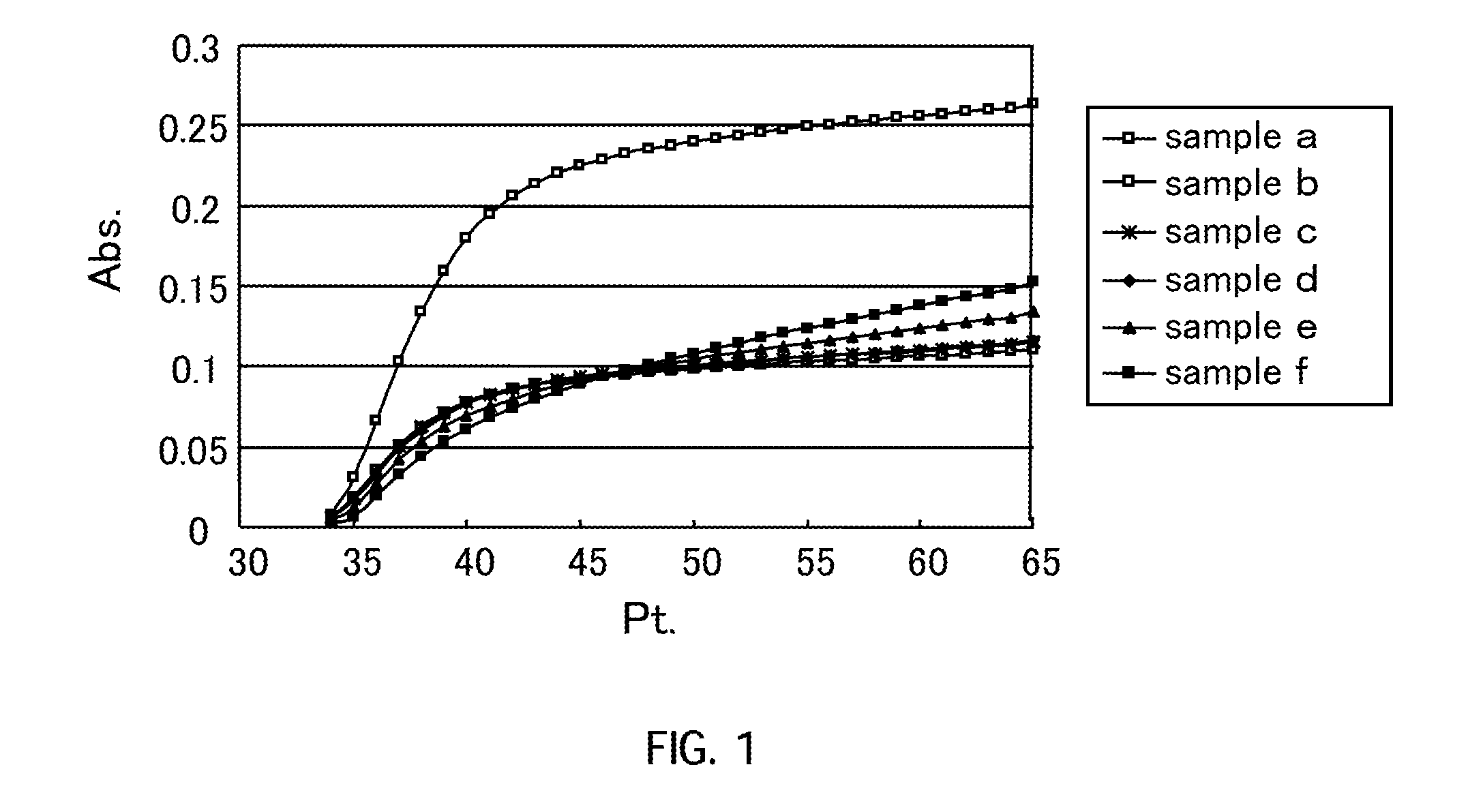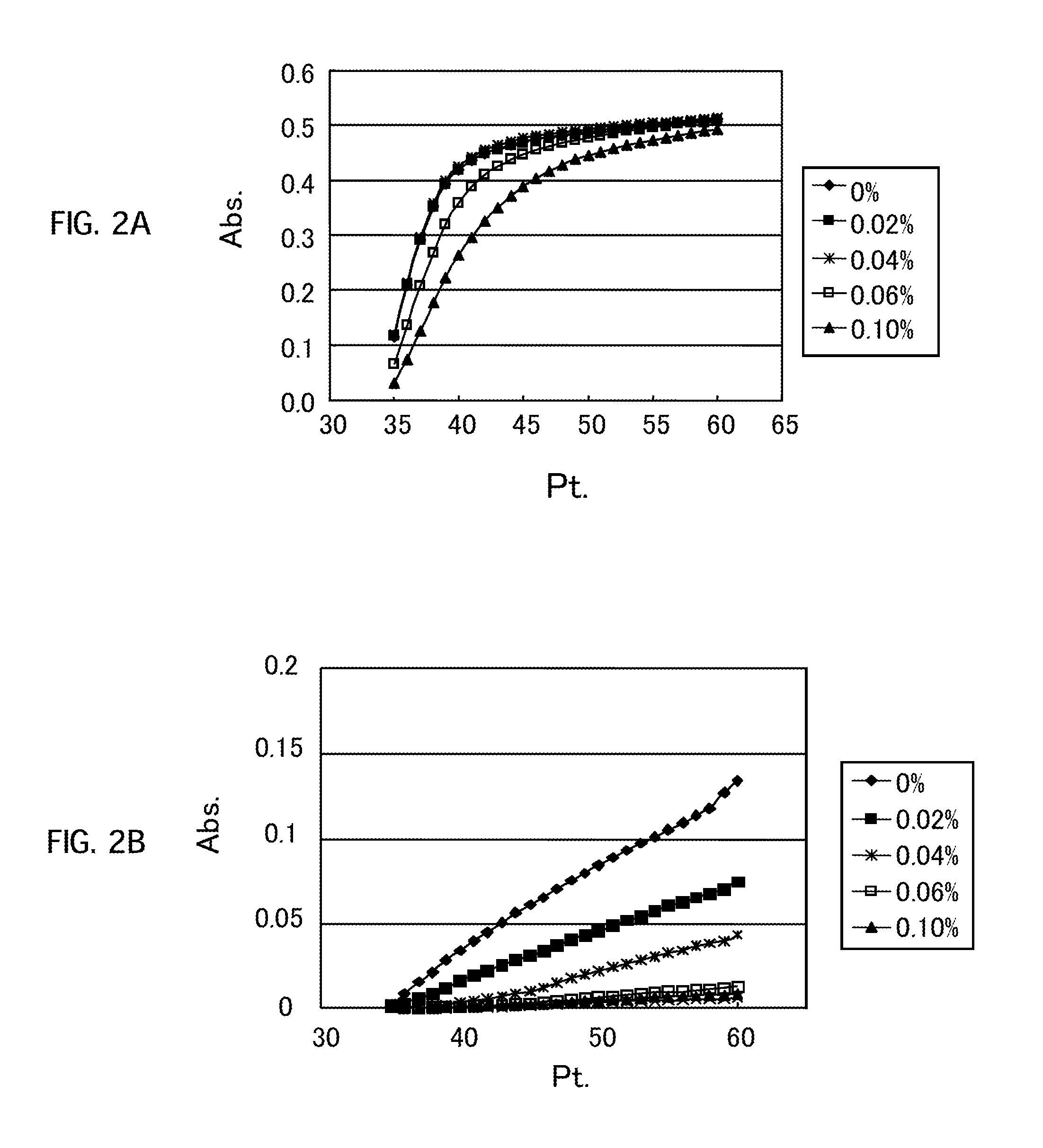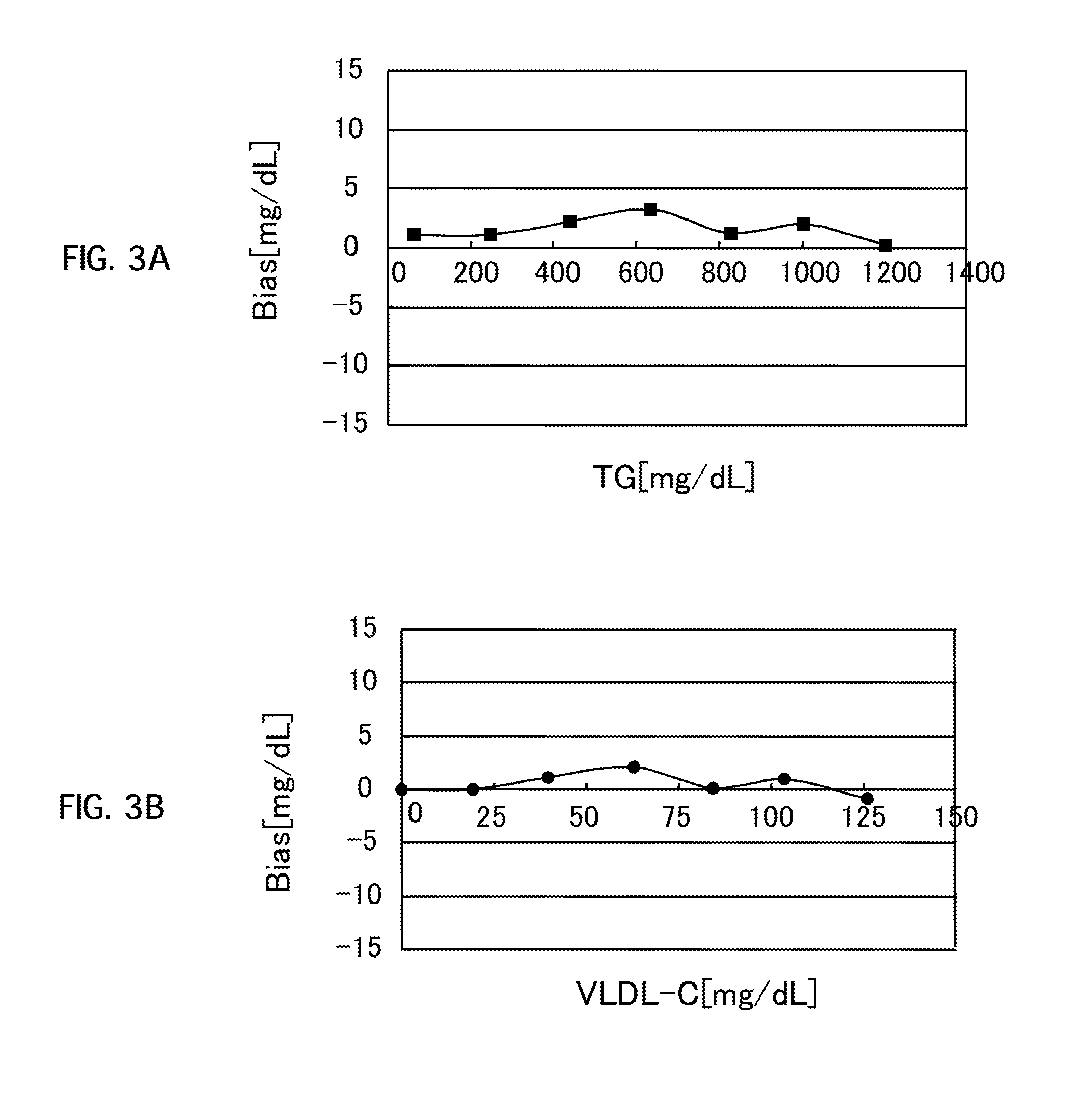Method and Kit for Measuring Cholesterol in Low-Density Lipoproteins
a low-density lipoprotein and kit technology, applied in the field of methods and kits for measuring cholesterol in low-density lipoproteins, can solve the problems of difficult to use these methods in clinical tests, difficult to deal with a number of samples by these methods,
- Summary
- Abstract
- Description
- Claims
- Application Information
AI Technical Summary
Benefits of technology
Problems solved by technology
Method used
Image
Examples
reference example 1
[0110]The reagents 1-1 to 1-4 and 2 as presented in Table 1 below were used to measure LDL cholesterol in samples. The samples used were each obtained by adding to human serum free of lipoproteins VLDL and LDL recovered from human serum by ultracentrifugal fraction and diluting the resultant 20 times with the reagents 1-3 (LDL concentration: 83 mg / dL, VLDL concentration: 61 mg / dl).
[0111]To 20 μL of each sample, 90 μL of reagent 1-1, 30 μL of reagent 1-2, and 15 μL of reagent 1-4 were added in order, and they were reacted with each other for 240 seconds at 37° C. Then, the reagents 2 containing surfactants presented in Table 2 below were added to the samples, respectively, in amount of 15 μL, and the absorbance was measured using a general purpose automatic analyzer (trade name: BioMajesty-8, manufactured by JEOL Ltd.) and measurement values of LDL cholesterol were obtained. Table 2 below provides the results.
TABLE 1Concentration atFinalthe time of additionconcentrationReagentCHDH5U / ...
reference example 2
[0113]A polyoxyethylene distyrenated phenyl ether having a HLB of 12.8 (trade name: Emulgen A60, manufactured by Kao Corporation, concentration: 8 wt % (final concentration: 0.71 wt %)) as the surfactant of the reagent 2 and samples a to f, whose compositions are as presented in Table 3 below, were used to determine the absorbance in the same manner as in Reference Example 1. The results are shown in FIG. 1. In FIG. 1, the vertical axis indicates absorbance and the horizontal axis indicates measuring time, and 1 Pt. corresponds to 9 seconds.
TABLE 3LDL (mg / dL)VLDL (mg / dL)sample a51—sample b136—sample c5219sample d5260sample e51104sample f50160
[0114]As can be seen from FIG. 1, in the case of the samples c and d each having a VLDL concentration of less than 100 mg / dL, it was shown that LDL could be solubilized selectively by subjecting LDL to an enzyme reaction in the presence of the surfactants A1 and B1. On the other hand, in the case of the samples e and f each having a VLDL concent...
reference example 3
[0115]Regents 1-1 to 1-4 as presented in Table 4 below were used to eliminate HDL cholesterol in samples. The samples used were each obtained by adding a physiological saline solution to a HDL preparation recovered from human serum by ultracentrifugal fraction and concentrated adequately (HDL concentration: 160 mg / dL).
[0116]To each sample, the reagents 1-1, 1-2, and 1-4 were added in order and they were reacted with each other for 240 seconds at 37° C. Then, the absorbance was determined using a general purpose automatic analyzer (trade name: BioMajesty-8, manufactured by JEOL Ltd.) and measurement values of HDL cholesterol were obtained. FIG. 2A shows the results.
[0117]Further, in order to check whether or not LDL was solubilized at the time of eliminating HDL, the measurement was performed in the same manner as above except for using samples each obtained by adding a physiological saline solution to a LDL preparation recovered from human serum by ultracentrifugal fraction and conc...
PUM
 Login to View More
Login to View More Abstract
Description
Claims
Application Information
 Login to View More
Login to View More - R&D
- Intellectual Property
- Life Sciences
- Materials
- Tech Scout
- Unparalleled Data Quality
- Higher Quality Content
- 60% Fewer Hallucinations
Browse by: Latest US Patents, China's latest patents, Technical Efficacy Thesaurus, Application Domain, Technology Topic, Popular Technical Reports.
© 2025 PatSnap. All rights reserved.Legal|Privacy policy|Modern Slavery Act Transparency Statement|Sitemap|About US| Contact US: help@patsnap.com



